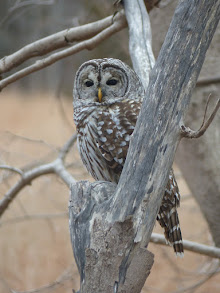Saturday, December 24, 2022
Sunday, December 11, 2022
Hearst and the Devil Fish
Phoebe Hearst didn't care for her son's taste in women. Throughout his adult life, the media magnate William Randolph Hearst had a taste for showgirls and lived more or less openly with mistresses even while raising a family of five sons with his legal wife, Millicent (another showgirl). While still in his twenties, he had come close to marrying an aspiring actress named Eleanor Calhoun. Though Phoebe had actually introduced the two, she regarded Calhoun as a golddigger and firmly opposed their union. Young "Will" Hearst, at that point, had ambition but little money of his own. His father was a wealthy mining entrepreneur who eventually became a US senator, but he was absent much of the time, marginally literate, and averse to correspondence; it was Phoebe, originally a Missouri schoolteacher, who kept tabs on things. In 1887 she wrote to a friend:
It turns out that the term "devil-fish" or "devilfish" has been applied to a bewildering range of creatures, from gray whales to manta rays, but the animal Phoebe had in mind was neither fish nor cetacean but a cephalopod. Had she been inclined, she could have read an 1875 book by Henry Lee, the keeper of the Brighton Aquarium, entitled The Octopus, Or, The "Devil-fish" of Fiction and of Fact. One chapter of Lee's book retells a portion of Victor Hugo's novel Les Travailleurs de la mer, which describes a life-and-death struggle between a Guernsey fisherman and a giant octopus. Phoebe, who was well-travelled and who is known to have studied French as an adult, may well have been familiar with Hugo's account, in translation or in the original, and if not no doubt she had heard similar stories.
Once the "Devil fish" has been identified, the metaphor starts to make sense. Phoebe saw Eleanor Calhoun as a sinister monster threatening to enfold Will in her lethal embrace. But what about the "toils"?
My first thought was that Hearst's biographer, David Nasaw, had mistranscribed Phoebe's letter, and that what she really wrote was "coils of the Devil fish," referring to its tentacles. But Nasaw is a careful researcher and his book is well-edited; surely the error, if it were such, would have been spotted early on. I then supposed that Phoebe meant to write "coils" but had slipped and written "toils," perhaps with Hugo's "toilers" in the back of her mind. As it turns out, however, there's no need for creative speculations. Phoebe wrote "toils" because she meant "toils"; the word "toil" has an archaic meaning of "net, snare," related to the French toile. In a 19th-century translation of Hugo's The Hunchback of Notre-Dame a fly is said to be "caught in the toils of the spider." The octopus idiom seems to have been in the air; in 1897 a writer named Owen Hall, who certainly hadn't read Phoebe's letter, used the identical words in a short story entitled "In a Treasure Ship."
A similar molluscan metaphor would inspire Frank Norris's 1901 novel about the California railway industry, The Octopus.
Illustration: painting by Victor Hugo
I am so distressed about Will that I don't really know how I can live if he marries Eleanor Calhoun. She is determined to marry him and it seems as if he must be in the toils of the Devil fish.The last phrase is odd. What was a Devil fish, and what labors did it undertake? Why would it be an apt metaphor for a woman who, in Phoebe's view, was out to ensnare her son?
It turns out that the term "devil-fish" or "devilfish" has been applied to a bewildering range of creatures, from gray whales to manta rays, but the animal Phoebe had in mind was neither fish nor cetacean but a cephalopod. Had she been inclined, she could have read an 1875 book by Henry Lee, the keeper of the Brighton Aquarium, entitled The Octopus, Or, The "Devil-fish" of Fiction and of Fact. One chapter of Lee's book retells a portion of Victor Hugo's novel Les Travailleurs de la mer, which describes a life-and-death struggle between a Guernsey fisherman and a giant octopus. Phoebe, who was well-travelled and who is known to have studied French as an adult, may well have been familiar with Hugo's account, in translation or in the original, and if not no doubt she had heard similar stories.
Once the "Devil fish" has been identified, the metaphor starts to make sense. Phoebe saw Eleanor Calhoun as a sinister monster threatening to enfold Will in her lethal embrace. But what about the "toils"?
My first thought was that Hearst's biographer, David Nasaw, had mistranscribed Phoebe's letter, and that what she really wrote was "coils of the Devil fish," referring to its tentacles. But Nasaw is a careful researcher and his book is well-edited; surely the error, if it were such, would have been spotted early on. I then supposed that Phoebe meant to write "coils" but had slipped and written "toils," perhaps with Hugo's "toilers" in the back of her mind. As it turns out, however, there's no need for creative speculations. Phoebe wrote "toils" because she meant "toils"; the word "toil" has an archaic meaning of "net, snare," related to the French toile. In a 19th-century translation of Hugo's The Hunchback of Notre-Dame a fly is said to be "caught in the toils of the spider." The octopus idiom seems to have been in the air; in 1897 a writer named Owen Hall, who certainly hadn't read Phoebe's letter, used the identical words in a short story entitled "In a Treasure Ship."
A similar molluscan metaphor would inspire Frank Norris's 1901 novel about the California railway industry, The Octopus.
Illustration: painting by Victor Hugo
Subscribe to:
Comments (Atom)





